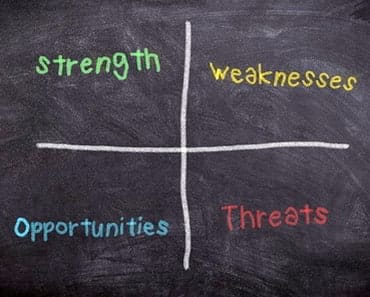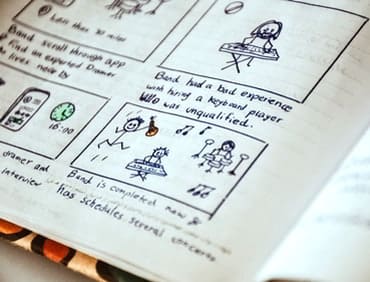Unleash Awesome Creativity: 10 Brainstorming Techniques

Estimated reading time: 24 Min
Effective brainstorming techniques help share collective knowledge and diverse viewpoints, leading to fresh perspectives, innovation and breakthrough solutions.
Brainstorming plays a significant role in the problem-solving process, encouraging creativity and collaboration, and generating a multitude of ideas.
It provides a tool for individuals or teams to freely explore possibilities and overcome mental blocks.
This article explores 10 brainstorming techniques that I’ve found valuable as a coach and facilitator, over the past 40+ years.
These 10 techniques can increase the quality of idea generation and help smooth the path from ideas to solutions to planning and taking action.
Whether exploring options for your next holiday, creative artistic endeavours, tactics for sporting ambitions, or planning your next business venture, each technique offers a different approach to stimulating creativity, encouraging involvement, and unlocking innovative thinking.
Brainstorming Techniques
By understanding and implementing some of these techniques, you’ll gain a toolkit of strategies to improve brainstorming sessions, boost problem-solving capabilities, and navigate the route from generating ideas to achieving the required outcomes.
Technique 1: Rapid Ideation
Definition of rapid ideation and its benefits
Rapid ideation refers to the technique of generating a large quantity of ideas quickly, typically within a contained, short timeframe.
It appears simple, but it should not be undervalued because of that.
As a facilitator of workshops that explored diverse subjects, this is the technique that I used most often.
In addition, it allows a group to incorporate any of the other techniques into a fast moving session.
It encourages participants to think spontaneously and unleash their creativity without overanalysing or self-censoring their thoughts.
The primary goal of rapid ideation is to generate a diverse range of ideas, foster innovation, and uncover unconventional solutions.
This technique allows for the exploration of a wide spectrum of possibilities, increasing the chances of finding unique and breakthrough concepts.
The benefits of rapid ideation include:
- it promotes a free-flowing and uninhibited thinking process, encouraging participants to think beyond boundaries and explore unconventional ideas.
- It helps overcome mental blocks and encourages the generation of ideas that may have been overlooked in more constrained or structured brainstorming approaches.
- It also fosters a collaborative and inclusive environment, as participants can build upon each other’s ideas, creating a synergy of creativity and innovation.
Techniques to generate a large quantity of ideas quickly
- Traditional Brainstorming
Conduct traditional brainstorming sessions where participants verbally share ideas without judgment or evaluation. Encourage a fast-paced and free-flowing exchange of ideas. - Mind Dump
Set a time limit and ask participants to write down as many ideas as possible within that timeframe. Quantity is prioritised over quality in this technique. - Word Association
Start with a random word or a specific problem statement, and ask participants to quickly associate related words or ideas. This technique sparks new connections and stimulates the generation of ideas. - SCAMPER Blitz
Utilise the SCAMPER technique mentioned earlier, but with an emphasis on speed and rapid exploration of each component. Challenge participants to come up with as many SCAMPER-based ideas as possible within a short timeframe. - 30 Circles
Provide participants with a sheet of paper containing 30 circles. Instruct them to fill each circle with a unique idea or concept within a limited timeframe. This technique encourages rapid ideation and forces participants to think outside the box. - Sticky Notes: Chaos
Provide pads of sticky post-it notes and suitable pens. Instruct participants, working on there own, to write one idea on each sticky note. Each idea needs to be expressed with two to three words. Ask them to initial each note and place it randomly on a flat surface that all can see. This should take 10 to 20 minutes.
Strategies for selecting and refining ideas from the rapid ideation session
After the rapid ideation session, it is crucial to select and refine the most promising ideas for further development. Consider the following strategies:

- Grouping and categorising
Group similar ideas together based on common themes or underlying concepts. This helps in organising and structuring the ideas for evaluation. This works well with post-it notes.
Nominate a couple of participants to organise the stickies into groups of similar, related ideas.
Then have the rest of the participants examine the groupings and re-organise until there is a consensus for the contents of each group.
Give each group of ideas a unique, meaningful title. - Evaluation criteria
Define evaluation criteria based on the project’s objectives, feasibility, potential impact, or alignment with desired outcomes. Use these criteria to assess the ideas and identify those with the highest potential. - Multi-voting
Allocate a limited number of votes to each participant and ask them to vote for their top ideas. This democratic approach helps prioritise ideas that receive the most votes, indicating their popularity and potential. - SWOT analysis
Use a SWOT (Strengths, Weaknesses, Opportunities, Threats) analysis, as explained in the next technique, to evaluate the ideas based on their internal and external factors. - Iterative refinement
Refine and combine ideas iteratively. Look for ways to improve, build upon, or merge ideas to create stronger and more comprehensive solutions. - Work with a workshop leader or facilitator
The role of the “leader” is to handle timekeeping, discipline, make sure everyone involved has opportunities to be involved and to keep a group on track.
By implementing these strategies, the most promising ideas can be selected, refined, and developed further, increasing the likelihood of successful implementation and achieving desired outcomes.
Technique 2: Mind Mapping
Mind mapping offers a powerful visual approach to brainstorming.
It’s great for organising thoughts, ideas, and information in a hierarchical and interconnected manner.
It involves creating a visual representation of a central idea or problem and branching out with related concepts, subtopics, and associations.
So, mind maps provide a structured framework for idea generation, enabling individuals and teams to explore ideas comprehensively, stimulate associations, and visualise the path towards practical solutions.
How to create a mind map for idea generation
To create a mind map, start by identifying the central theme or problem and write it at the centre of a blank page or digital canvas.
From there, radiate branches outward, representing different subtopics or related ideas.
These branches can further split into sub-branches, forming a tree-like structure.
Use keywords, short phrases, and symbols to capture and represent ideas concisely.
Colour coding, icons, and images can be employed to enhance visual appeal and aid in memory retention.
Examples of real-world applications and success stories
Mind mapping finds applications in various domains, such as business, education, project management, and personal development.
For instance, in business, mind mapping can be used for strategic planning, organising marketing campaigns, or developing product roadmaps.
In education and writing, it can assist in note-taking, summarising complex concepts, or outlining essays and articles.
Many renowned individuals, including inventors, entrepreneurs, and artists, have credited mind mapping as a key tool in their creative process.
Successful companies have also embraced mind mapping techniques to foster innovation and streamline their operations.
One notable success story is the case of Tony Buzan, a pioneer in mind mapping.
He popularised this technique and demonstrated its effectiveness in enhancing memory, creativity, and problem-solving skills.
Countless individuals and organisations have since adopted mind mapping to generate ideas, structure information, and facilitate better decision-making.
Technique 3: SCAMPER
Overview of the SCAMPER technique and its purpose

SCAMPER is a brainstorming method created by Bob Eberle that offers a formal framework for coming up with fresh concepts by imaginatively investigating many facets of an already existing concept, thing, or procedure.
The purpose of SCAMPER is to encourage innovative thinking by challenging assumptions, expanding possibilities, and prompting creative modifications.
By applying the SCAMPER method, individuals or teams can uncover opportunities for improvement, uncover hidden potential, and stimulate inventive solutions.
Definition of each facet of the SCAMPER acronym
SCAMPER stands for: Substitute, Combine, Adapt, Modify, Put to another use, Eliminate, and Reverse:
- Substitute
In this facet, one considers replacing elements or components of an idea with alternative options. It involves identifying aspects that can be substituted to enhance performance, functionality, or appeal. - Combine
This facet involves exploring opportunities for combining different ideas, concepts, or features to create something new. By blending elements from unrelated sources, unique synergies and innovative solutions can emerge. - Adapt
Here, the focus is on adapting or modifying existing ideas or concepts to suit a different context or purpose. By adapting existing solutions, individuals can uncover novel applications or address specific needs. - Modify
This component encourages individuals to make modifications or alterations to an idea’s attributes, such as its size, shape, colour, or structure. By tweaking existing elements, new possibilities and improved outcomes may be realised. - Put to another use
This facet involves examining an idea or concept and exploring alternative applications or contexts where it could be used. By considering different contexts, individuals can unlock untapped potential and uncover innovative uses. - Eliminate
In this component, individuals critically analyse an idea or concept to identify elements that can be eliminated without compromising its core functionality. By removing unnecessary components, simplicity, efficiency, and elegance can be achieved. - Reverse
This facet encourages individuals to reverse or invert an idea’s typical characteristics or assumptions. By challenging the status quo and considering the opposite perspective, new insights and creative breakthroughs can emerge.
Example of SCAMPER in action
To illustrate the SCAMPER technique, let’s consider adaptations to a smartphone.
Any similarity to your favourite smartphone is purely coincidental although most of these ideas have already been implemented:
- Substitute
Replace the physical home button with a virtual touch-sensitive button to increase the screen-to-body ratio. - Combine
Integrate a projector feature into the smartphone, allowing users to project images or videos on a larger surface. - Adapt
Modify the smartphone’s camera software to enable advanced augmented reality experiences, such as real-time object recognition or virtual try-on for shopping. - Modify
Add a modular design feature that allows users to easily swap and upgrade individual components like the camera, battery, or processor. - Put to another use
Repurpose the smartphone as a remote control for home automation systems, combining its capabilities with smart home technologies. - Eliminate
Remove the audio jack and encourage the use of wireless headphones to simplify the device’s design and improve water resistance. - Reverse
Instead of focusing on creating a slimmer phone, design a smartphone with a thicker form factor to accommodate a larger battery for extended battery life.
By applying the SCAMPER technique to existing ideas or products, individuals can test assumptions and uncover inventive modifications, unique combinations, and alternative applications, leading to innovative solutions and improved outcomes.
Technique 4: Six Thinking Hats

The Six Thinking Hats method, developed by Edward de Bono, is a powerful brainstorming technique designed to enhance collaboration, critical thinking, and problem-solving.
The method employs six metaphorical “thinking hats,” each representing a different perspective or thinking mode.
By adopting and systematically switching between these hats, individuals can fully explore a problem or idea from various angles, fostering comprehensive analysis and generating a diverse range of insights.
By wearing the different hats, individuals are encouraged to step out of their habitual thinking patterns and embrace different mindsets.
This structured approach facilitates more balanced and well-rounded discussions, minimising biases and allowing for a holistic examination of the subject matter.
By systematically switching between the thinking hats, individuals can focus their attention on specific aspects of the problem or idea at hand.
This method prevents discussions from becoming one-sided or dominated by a single perspective.
The different hats create a shared language and framework for collaboration, ensuring that each thinking mode is given due consideration.
The Six Thinking Hats technique promotes effective communication and understanding among team members.
By wearing the same hat at a given time, participants can align their thinking and contribute to the collective exploration of ideas.
This approach reduces conflicts arising from differing viewpoints and encourages constructive dialogue where everyone’s input is valued.
Moreover, the method encourages creativity and innovation by providing dedicated space for imaginative thinking (Green Hat) and emotional considerations (Red Hat).
It encourages participants to explore beyond the obvious, challenge assumptions, and generate novel solutions that might not have emerged through conventional thinking alone.
Ultimately, the Six Thinking Hats technique empowers individuals to approach problem-solving and brainstorming in a more structured and collaborative manner.
It expands the range of perspectives, encourages comprehensive analysis, and enables teams to make well-informed decisions.
By adopting these different thinking modes, individuals can unlock their full creative potential and drive meaningful outcomes in problem-solving scenarios.
Description of each of the thinking hats and their roles in the brainstorming process
- The White Hat represents objective and factual thinking
When wearing the White Hat, participants focus on gathering information, facts, and data relevant to the problem or idea under consideration. This hat encourages logical analysis and an unbiased examination of the situation. - The Red Hat signifies emotional and intuitive thinking
Wearing the Red Hat allows participants to express their feelings, gut reactions, and intuitions without the need for justification. This hat encourages exploring emotional responses and considering the human element in decision-making. - The Black Hat symbolises critical and cautious thinking
When wearing the Black Hat, participants examine the potential risks, drawbacks, and limitations of the idea or solution. This hat helps in identifying weaknesses, potential pitfalls, and areas that require further scrutiny. - The Yellow Hat represents optimistic and positive thinking
Wearing the Yellow Hat allows participants to explore the benefits, advantages, and possibilities associated with the idea or solution. This hat encourages positive thinking, envisioning favorable outcomes, and highlighting the value proposition. - The Green Hat signifies creative and innovative thinking
When wearing the Green Hat, participants focus on generating fresh ideas, alternative perspectives, and creative solutions. This hat encourages brainstorming, exploring unconventional approaches, and thinking outside the box. - The Blue Hat represents reflective and process-oriented thinking
The facilitator typically wears the Blue Hat and guides the brainstorming session. This hat coordinates and manages the process, sets objectives, structures the discussion, and ensures productive communication and collaboration.
Practical tips for implementing the Six Thinking Hats technique
- Clearly define the focus or problem statement before starting the brainstorming session.
- Assign specific thinking hats to individuals or rotate the hats among participants to encourage diverse perspectives.
- Allocate dedicated time for each hat to ensure a balanced exploration of ideas.
- Encourage participants to embrace the role associated with each hat fully, even if it goes against their natural tendencies.
- Foster an open and non-judgmental environment to allow for free expression of ideas.
- Use visual aids, such as physical hats or virtual representations, to enhance engagement and remind participants of the thinking mode.
- Capture ideas and insights generated under each hat for further evaluation and analysis.
- Encourage participants to build upon each other’s ideas and explore combinations of thinking modes.
- Iterate and repeat the process as needed to delve deeper into the problem or generate additional insights.
By implementing the Six Thinking Hats technique, individuals or teams can harness different thinking modes, break through cognitive biases, and approach problem-solving from multiple angles.
This method promotes effective collaboration, improves decision-making, and cultivates a creative and constructive brainstorming environment.
Technique 5: SWOT Analysis

SWOT Analysis is a strategic planning technique that evaluates the internal strengths and weaknesses of an idea, product, or (perhaps familiarly) an organisation, as well as the external opportunities and threats it may face.
In brainstorming, SWOT Analysis is used to assess the viability and potential of ideas.
Conduct a SWOT Analysis
To conduct a SWOT Analysis for idea evaluation and refinement, follow these 5 steps:
- Identify Strengths
Evaluate the internal strengths of the idea or solution. What advantages does it possess? What unique features or capabilities does it offer? Consider aspects such as expertise, resources, technology, or competitive advantages. - Assess Weaknesses
Analyse the internal weaknesses or limitations of the idea. What areas need improvement? Are there any potential obstacles or challenges? Be honest in identifying areas where the idea may fall short or require further development. - Explore Opportunities
Examine the external opportunities that the idea can leverage. Are there market trends or emerging needs that align with the idea? Are there untapped target audiences or unexplored market segments? Identify areas where the idea can thrive and create value. - Evaluate threats
Consider the external threats that the idea may face. Are there competitors or market forces that pose challenges? Are there potential risks or obstacles that could hinder the idea’s success? Identify potential threats and develop strategies to mitigate them. - Analyse findings
Consolidate the findings from the SWOT Analysis and evaluate the overall strengths, weaknesses, opportunities, and threats to the idea. Look for patterns, connections, and areas that require further attention or refinement. Develop a plan to take advantage of strengths and opportunities, and to minimise the impact of any weaknesses or threats.
Case studies demonstrating the use of SWOT Analysis in generating solutions
These case studies highlight how SWOT Analysis can provide valuable insights for idea evaluation and refinement.
By leveraging strengths and opportunities, while addressing weaknesses and threats, organisations can develop strategies to maximise their chances of success and navigate challenges effectively.
SWOT Analysis serves as a practical framework for decision-making and helps in identifying key areas of focus for further development and improvement.
Case Study 1: XYZ Tech Start Up
- Strengths
Strong technical expertise, innovative product design, and a talented team. - Weaknesses
Limited financial resources, lack of brand recognition, and a small customer base. - Opportunities
Growing market demand for the product, emerging partnerships with industry leaders, and potential funding opportunities. - Threats
Intense competition from established players, changing regulatory environment, and rapidly evolving technology landscape. - Analysis
By conducting a SWOT Analysis, XYZ Tech Start Up identified strategies to leverage their strengths and opportunities, while addressing weaknesses and mitigating threats. They focused on enhancing their marketing efforts, securing strategic partnerships, and exploring funding options to fuel growth.
Case Study 2: ABC Retail Company
- Strengths
Strong brand presence, loyal customer base, and a well-established supply chain. - Weaknesses
Limited online presence, outdated technology infrastructure, and slow adaptation to changing consumer preferences. - Opportunities
Growing e-commerce market, increasing demand for sustainable products, and expansion into international markets. - Threats
Intense competition from online retailers, shifting consumer trends, and supply chain disruptions. - Analysis
By conducting a SWOT Analysis, ABC Retail Company recognised the need to invest in technology upgrades, enhance their online presence, and capitalise on the growing demand for sustainable products. They focused on developing an omnichannel strategy, revamping their website, and forging partnerships with eco-friendly suppliers.
Technique 6: Reverse Brainstorming

Often a brainstorming session focuses on positive outcomes more than understanding the root cause of a problem.
Reverse brainstorming is a unique brainstorming technique that involves approaching a problem or challenge from the opposite perspective.
Instead of focusing on generating ideas for solutions, participants in a reverse brainstorming session aim to identify potential causes or contributors to the problem.
By exploring the factors that lead to undesirable outcomes, participants can gain valuable insights and approach problem-solving from a different angle.
Reverse brainstorming helps uncover underlying issues, challenge assumptions, and stimulate innovative thinking to find effective solutions.
Steps involved in conducting a reverse brainstorming session
- Clearly define the problem
Begin by articulating the problem statement or challenge that needs to be addressed. Ensure that participants have a clear understanding of the problem at hand. - Reverse the goal
Instead of seeking solutions, reframe the objective to identify potential causes or reasons that contribute to the problem. - Generate reverse ideas
Encourage participants to brainstorm and suggest ideas or actions that would exacerbate or create the problem. They should think of scenarios, behaviours, or factors that might lead to the undesirable outcomes. - Record ideas
Capture all the reverse ideas shared by participants. Use a whiteboard, flip chart, or a digital collaboration tool to document the ideas for further analysis. - Evaluate and analyse
Once a sufficient number of reverse ideas have been generated, review and analyse them. Look for patterns, common themes, or underlying causes that emerge from the reverse ideas. - Reverse to solutions
Transition back to the original goal of finding solutions. Now, analyse the reverse ideas in reverse order and consider how avoiding or addressing those factors can lead to effective solutions or preventive measures.
Examples of problem-solving using reverse brainstorming
Reverse brainstorming encourages critical thinking, challenges assumptions, and helps in uncovering often overlooked factors that contribute to problems.
By examining the problem from a different perspective, organisations can develop more comprehensive and effective solutions.
Example 1: Quality control in a manufacturing company
Instead of brainstorming solutions to address defects in the products, reverse brainstorming focuses on identifying actions that could have led to the defects.
This approach allows a team to uncover process weaknesses, material flaws, or human errors that may be contributing to the quality issues.
By addressing these underlying causes, the team can improve quality control and prevent future defects.
Example 2: Employee turnover in a company
Instead of brainstorming retention strategies, reverse brainstorming explores actions or factors that might drive employees away.
This approach helps identify organisational issues, poor management practices, or inadequate employee benefits that could be contributing to the high turnover rate.
By addressing these root causes, the company can improve employee satisfaction, engagement, and retention.
Technique 7: Analogies and Metaphors
Analogies and metaphors are powerful creative thinking tools that enable individuals to draw connections between seemingly unrelated concepts or ideas.
By comparing an unfamiliar or complex problem to something more familiar, analogies and metaphors offer fresh perspectives and insights.
They provide a framework for understanding the problem in a new light and inspire innovative solutions by leveraging the characteristics, relationships, or dynamics of the analogical or metaphorical source.
Techniques for using analogies and metaphors
- Identify relevant analogies and metaphors
Begin by identifying analogical or metaphorical sources that bear resemblance or share key attributes with the problem at hand. Look for similarities in structure, function, behaviour, or underlying principles. - Analyse and extract insights
Analyse the analogical or metaphorical source and extract insights that can be applied to the problem. Identify the unique features, approaches, or solutions found in the source and consider how they can be adapted to address the problem. - Make connections and generate ideas
Use the insights gained from the analogical or metaphorical source to generate ideas and potential solutions for the problem. Make connections between the characteristics of the source and the problem, and explore how those connections can lead to innovative approaches. - Test and refine ideas
Evaluate and refine the generated ideas by considering their feasibility, practicality, and alignment with the problem’s constraints. Iterate on the ideas, adapting and modifying them as needed to ensure they effectively address the problem.
Case studies highlighting the power of analogies and metaphors in brainstorming
These case studies demonstrate how analogies and metaphors can ignite innovative thinking and generate solutions that go beyond conventional approaches.
By leveraging the wisdom of nature and other domains, individuals can uncover novel insights, overcome limitations, and develop creative solutions to complex problems.
Case Study 1: Biomimicry in Product Design
In product design, the use of analogies from nature has led to breakthrough innovations.
For example, studying the structure and characteristics of bird wings has inspired the development of more efficient aircraft designs.
By emulating the flexibility, lightweight construction, and aerodynamics of bird wings, engineers have created aircraft with improved fuel efficiency and manoeuvrability.
Case Study 2: Urban Planning and Ant Colonies
Urban planners facing the challenge of designing efficient transportation systems have drawn analogies from ant colonies.
Ants use decentralised decision-making and pheromone trails to optimise their foraging routes.
By applying similar principles to urban planning, cities have developed more efficient traffic management systems, leading to reduced congestion and improved transportation networks.
Technique 8: Storyboarding

Storyboarding is a visual brainstorming technique commonly used in industries such as film, advertising, and design.
It involves creating a sequence of illustrated or sketched panels that depict key scenes, ideas, or concepts.
Storyboarding allows individuals or teams to visually map out and explore ideas, narratives, or processes in a coherent and engaging manner.
It encourages creativity, collaboration, and effective communication by providing a visual framework for brainstorming and idea development.
Steps for creating a storyboard to visualise and develop ideas
- Define the objective
Clearly define the objective of the storyboard, whether it’s to communicate a narrative, demonstrate a process, or convey a concept. Have a clear understanding of what needs to be conveyed through the storyboard. - Identify key scenes or elements
Determine the key scenes, ideas, or elements that need to be depicted in the storyboard. These may be significant events, important stages of a process, or key concepts to be communicated. - Sketch the panels
Create a sequence of panels or frames, each representing a specific scene or idea. Sketch or draw the visuals in each panel, ensuring clarity and coherence in conveying the intended message. Use simple illustrations or icons to represent the key elements. - Add annotations or descriptions
Include annotations or brief descriptions beneath each panel to provide additional context or explanation for the visuals. This helps viewers understand the intended meaning and facilitates discussion or feedback. - Arrange the panels
Arrange the panels in a sequential order that tells a coherent story or conveys the flow of ideas. Consider the logical progression and transitions between panels to ensure a smooth narrative or depiction. - Review and iterate
Step back and review the storyboard as a whole. Evaluate the clarity of the visuals, the effectiveness of the sequencing, and the overall impact of the storyboard. Iterate and make necessary refinements to enhance its effectiveness.
Real-life examples of successful idea generation through storyboarding
These real-life examples highlight the effectiveness of storyboarding in generating and refining ideas across various industries.
Storyboarding enables teams to visualise concepts, explore different possibilities, and effectively communicate ideas to stakeholders.
It enhances collaboration, provides a shared visual language, and allows for iterative refinement to create compelling narratives, user experiences, or visual productions.
Advertising
Storyboarding is commonly used in advertising to develop and present ideas for commercials or campaigns.
By visualising key scenes and narratives, storyboards help advertising teams align their creative vision, communicate ideas to clients, and guide the production process.
User Experience Design
Storyboarding is a valuable tool in user experience (UX) design.
Designers use storyboards to visualise the user journey, interactions, and scenarios.
It helps identify pain points, visualise solutions, and iterate on the user experience to create more intuitive and engaging products.
Film and Animation
Storyboarding is integral to the pre-production process in filmmaking and animation.
Filmmakers and animators use storyboards to plan and visualise key scenes, camera angles, character movements, and overall narrative flow. It serves as a blueprint for the final production, allowing for adjustments and improvements before the actual filming or animation begins.
Technique 9: Random Word Association

The random word association technique is a creative brainstorming method that involves using unrelated or randomly generated words to trigger new ideas, connections, and associations.
By introducing unexpected or unrelated words into the brainstorming process, individuals are prompted to think beyond their usual patterns and explore unconventional pathways.
This technique stimulates divergent thinking and opens up new avenues for idea generation and problem-solving.
How to use random words to trigger new ideas and connections
- Selecting random words
Start by selecting or generating random words unrelated to the problem or topic at hand. This can be done by flipping through a dictionary, using online random word generators, or simply picking words from a list. - Free association
Take one random word at a time and freely associate it with the problem or idea you’re exploring. Consider the characteristics, attributes, or concepts associated with the word and relate them to the problem. This helps to uncover new perspectives, alternative approaches, or fresh angles. - Make connections
Look for connections or relationships between the random word and the problem. Explore how the word can be metaphorically or conceptually linked to the problem, its components, or its underlying dynamics. Allow your mind to make unexpected associations and draw novel connections. - Generate ideas
Use the associations and connections formed to generate new ideas or solutions. Combine elements from the random word with the problem, challenge assumptions, and explore unconventional possibilities. This process encourages thinking outside the box and facilitates innovative thinking.
Tips for effective application of random word association
- Embrace randomness
Be open to the unexpected and embrace the randomness of the words generated. Avoid overthinking or censoring your thoughts during the association process. - Capture ideas
Keep a notepad or digital document handy to capture any interesting ideas or connections that arise during the random word association. This ensures that valuable insights are not lost and can be revisited later. - Iterate and explore multiple words
Repeat the process with multiple random words to stimulate further idea generation and uncover a broader range of connections and possibilities. - Collaborate and share
Engage in group discussions or collaborations using random word association. Sharing ideas and associations with others can lead to new insights and build upon each other’s thoughts. - Have fun and be playful
Random word association is a creative and playful technique. Approach it with a sense of curiosity, playfulness, and an open mind. Enjoy the process and let your imagination run wild.
Technique 10: Nominal Group Technique (NGT)
The Nominal Group Technique (NGT) is the last but by no means least important in my list of 10.
It’s a structured brainstorming method that enhances group decision-making and idea generation that I have incorporated into the agenda of most of the workshops I’ve run over the years.
I think of NGT as being an essential part of a facilitators toolkit.
NGT combines individual thinking with collaborative discussion to ensure equal participation and the consideration of diverse viewpoints.
This technique promotes equal opportunity for all participants to contribute, minimises the influence of dominant personalities, and encourages active involvement.
NGT is particularly effective when dealing with complex problems or when seeking to achieve consensus within a group.
How to facilitate an NGT session for collaborative idea generation
- Define the problem or topic
Clearly state the problem or topic that needs to be addressed. Ensure that participants have a shared understanding of the objective. - Silent idea generation
Provide participants with time to independently generate ideas or solutions related to the problem or topic. Encourage them to write down their thoughts without discussion or interaction. - Round-robin sharing
In a structured manner, ask each participant to share one idea at a time until all ideas have been shared. Go around the group, giving each participant an opportunity to contribute one idea at a time. During this phase, no discussions or evaluations take place. - Clarification and discussion
Once all ideas have been shared, allow participants to seek clarification or ask questions about the ideas presented. This phase promotes a deeper understanding of each idea and allows for additional insights or perspectives to emerge. - Voting or ranking
Provide participants with a structured method for voting or ranking the ideas. This could be through a numerical rating system, a ranking exercise, or a consensus-building approach like the multi-voting technique. The goal is to identify the most valuable or feasible ideas based on the collective input of the group.
Best practices for maximising the effectiveness of NGT
By implementing these best practices, the Nominal Group Technique can effectively harness the collective knowledge and intelligence of a group, foster collaboration, and generate high-quality ideas and decisions.
Since NGT promotes equal participation, minimises biases, and helps in achieving consensus, it’s a valuable technique for collaborative idea generation and decision-making.
To maximise the effectiveness of the Nominal Group Technique (NGT), consider the following best practices:
- Provide clear instructions
Ensure that participants have a clear understanding of the problem or topic, as well as the specific guidelines for the NGT session. Clear instructions help participants stay focused and aligned with the objectives. - Emphasise equal participation
Encourage all participants to contribute their ideas and insights. Create a safe and inclusive environment where everyone feels comfortable expressing their thoughts, regardless of their role or position within the group. - Use structured facilitation techniques
As the facilitator, employ techniques such as round-robin sharing, time limits for each phase, and facilitating respectful discussions. These structures maintain a fair and balanced process, ensuring that all participants have an opportunity to contribute. - Promote active listening
Encourage active listening and attentiveness among participants. This fosters a climate of respect, encourages building upon each other’s ideas, and enhances the overall quality of the discussion. - Balance individual and group dynamics
Strike a balance between individual idea generation and group discussion. Allocate sufficient time for individual idea generation to encourage diverse perspectives, and then facilitate group discussion to synthesise and refine the ideas collaboratively. - Capture and document ideas
Assign a designated person to capture and document the ideas, discussions, and outcomes of the NGT session. This ensures that the valuable insights and decisions made during the session are properly recorded and can be referred to in the future.
Summary
In this article, we explored 10 expert brainstorming techniques to enhance idea generation and problem-solving.
We discussed Mind Mapping, SCAMPER, Six Thinking Hats, Rapid Ideation, SWOT Analysis, Reverse Brainstorming, Analogies and Metaphors, Storyboarding, Random Word Association and Nominal Group Technique.
Each technique offers a unique approach to stimulate creativity, facilitate collaboration, and unlock innovative thinking.
I encourage you to apply these techniques in your brainstorming sessions and problem-solving endeavours.
By adopting these expert techniques, individuals and teams can expand their thinking, overcome mental blocks, and explore new possibilities.
If you embrace the diversity of approaches here and experiment with different techniques you’ll discover what works best for your specific context and challenges.
Effective brainstorming is a powerful tool for transforming ideas into practical solutions.
It fosters collaboration, encourages out-of-the-box thinking, and empowers individuals to approach problems from multiple angles.
By harnessing the collective knowledge, intelligence, and diverse perspectives, brainstorming enables us to tackle complex challenges, drive innovation, and create meaningful change.
So, embrace the value of brainstorming as a creative and dynamic process that can unlock the potential of your ideas, leading to transformative decisions that make a real impact.
Feel free to share your experiences here.
What has worked and what hasn’t.
If you have anything to add, please do so in the comments or contact me directly via the contact form.
🙂
Richard






